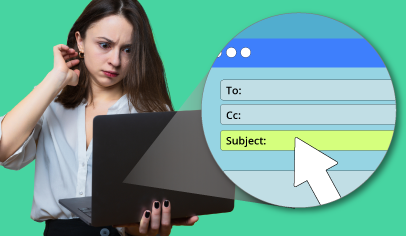Crafting Subject Lines That Drive Engagement
As a school or district leader, your emails contain important information for parents, teachers, and staff—but none of that matters if they don’t get opened. The right subject line can make all the difference in boosting engagement, reducing unread messages, and ensuring your school community stays informed. Here’s how to write subject lines that capture attention and drive action.
Keep It Clear and Concise
Your audience is busy, so your subject line should communicate the main point in as few words as possible. Aim for 6–10 words (or around 40 characters) to ensure visibility on both desktop and mobile devices.
Examples:
- District-Wide Schedule Update: Important Dates Inside
- Back-to-School: What Families Need to Know
- Severe Weather Alert: School Closures & Updates
Create Urgency (But Don’t Overdo It)
Encouraging immediate action can be effective—but too many “urgent” emails may cause readers to tune out. Use time-sensitive language carefully.
Effective phrases:
- Final Day to Complete Student Enrollment Forms
- Bus Route Changes: Action Needed by Friday
- Deadline Tomorrow: Register for Fall Parent Night
Personalization and Relevance Matter
Including a recipient’s name or a specific event increases open rates. If possible, segment your email lists so messages feel relevant to each group.
Examples:
- Dr. Thompson, Your School Updates Are Here
- Important Back-to-School Info for High School Families
- Your School Board Meeting Agenda for This Week
Avoid Spam Triggers
Certain words and symbols can land your email in spam folders. Avoid excessive capitalization, exclamation points, and overly promotional language. Use emojis sparingly—they can help engagement but may also trigger filters.
Words to avoid:
- FREE!!
- Act Now! Limited Time Only!
- Congratulations, You’ve Won!
Test Before Sending
Use tools like SubjectLine.com or email marketing platforms that offer subject line scoring to predict engagement. A/B testing different subject lines on a small segment of your audience can also help determine what resonates best.
Keep It Mobile-Friendly
Many parents and teachers check emails on their phones while on the go. To ensure readability, keep subject lines concise and front-load important information so it isn’t cut off on smaller screens.
Final Thought: Think Like a Parent
Before sending an email, ask yourself: Would I open this if I were a busy parent or teacher? If the answer is no, refine it. Strong subject lines help ensure your messages reach and inform the school community effectively.
By following these best practices, you can increase email engagement, improve communication, and ensure your most important messages don’t get lost in inbox clutter.




